King Canute may have had trouble stopping the tide, but not Tony. The Highways England traffic officer (TO) has simply to flick a couple of switches and the tide of cars pounding along the M26 in Kent slows to a crawl and, eventually, to a stop.
Minutes earlier, as we were travelling in the opposite direction, he’d spied the bonnet of a car – the remains of a recent accident – in the central reservation, just inches from the outside lane. There’s a strong wind and Tony reckons that it could blow the bonnet into the road.
So he’s going to move it, and to do that, he must stop the traffic. At the flick of the switch on the Land Rover Discovery’s ‘rolling road’ control panel, the LED message board at the rear of the vehicle displays ‘Slow down’. I turn around in my seat to see the few cars following us fall back. Tony wants to build up a head of traffic so that the lanes behind us become clogged, preventing an impatient driver making a break for it.
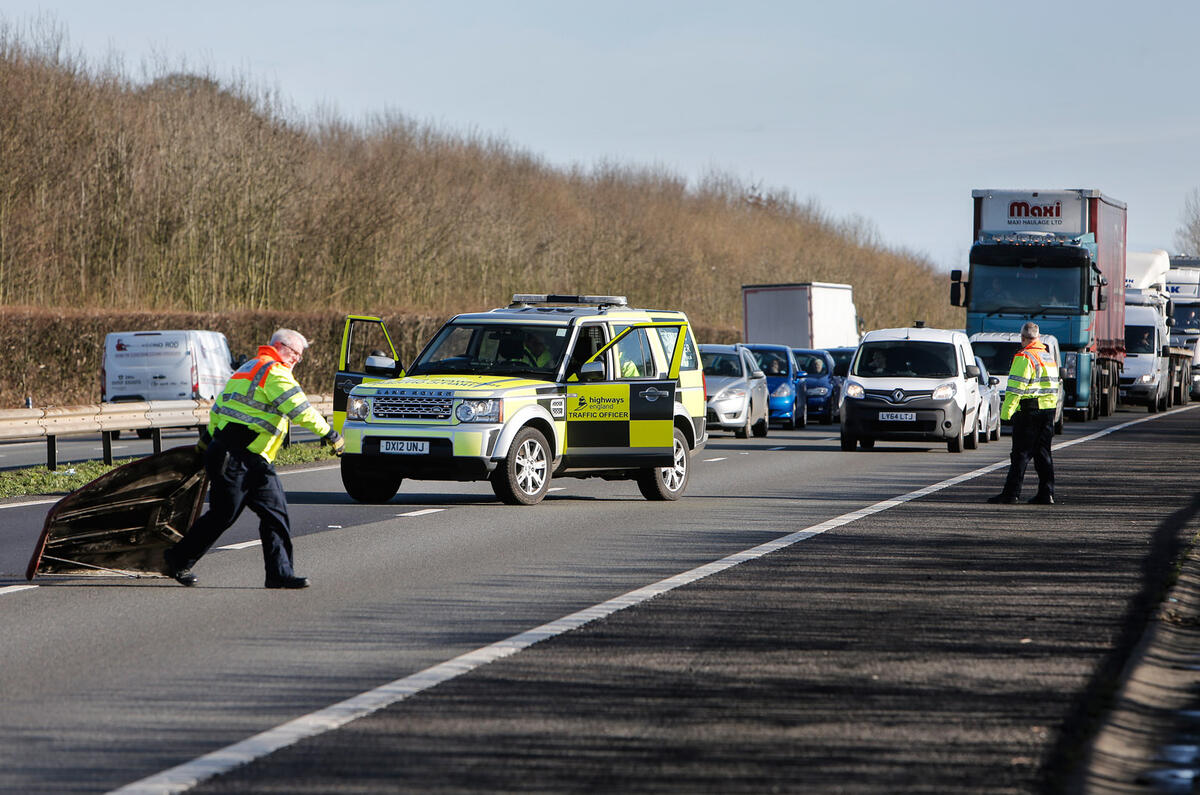
Mike, his colleague and our driver, positions the car in the middle of the motorway and, as the abandoned bonnet comes into view, he slows to a crawl before swinging the wheel and pulling up at an angle. Tony flicks the switch marked ‘Stop’.
I look behind again. The two lanes are thick with cars and trucks, all of them at a standstill. Tony jumps out and drags the discarded bonnet to the nearside verge, from where it’ll be retrieved later by a recovery crew.
It’s hard not to feel a twinge of sympathy for the drivers behind us. There you are, late for a business meeting and here, in the words of one popular pundit, is one of those ‘motorway Wombles: a fat bloke with facial hair and a Napoleon complex’, holding you up and ruining your day.
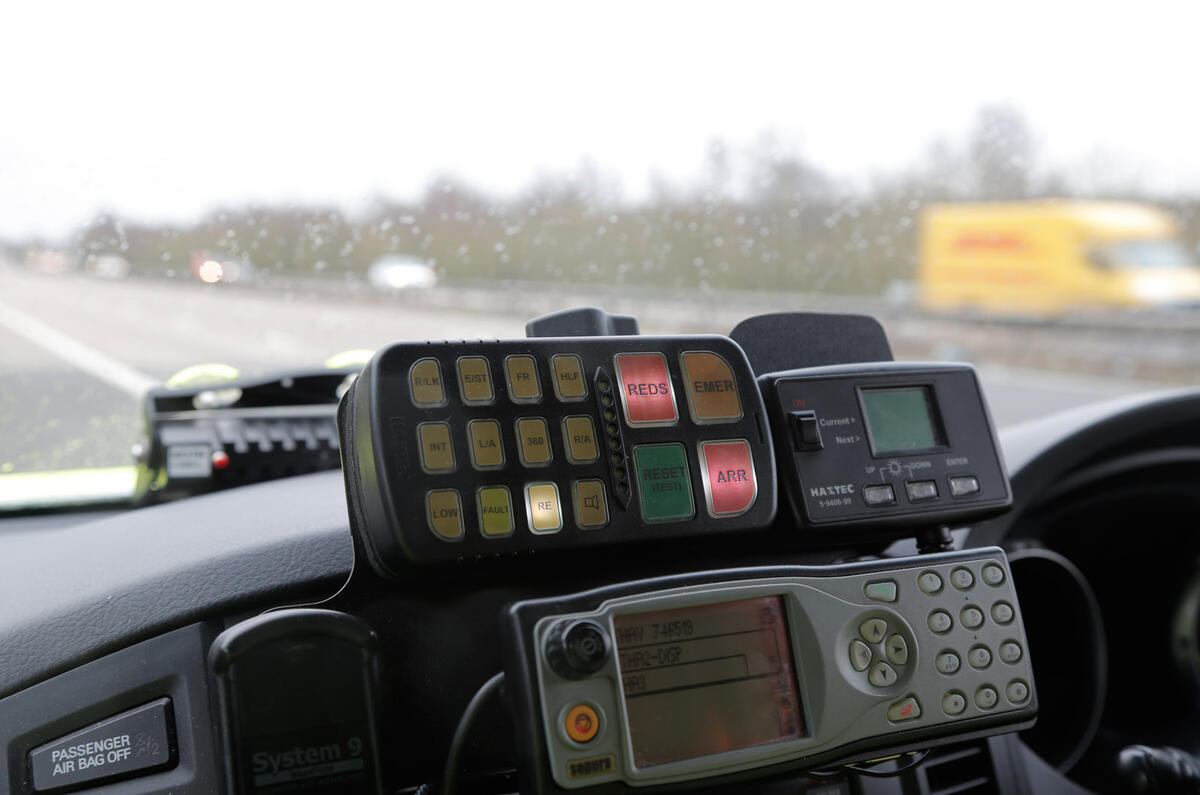
True, Tony has a beard, and both he and Mike are not exactly svelte (an hour earlier, we stopped for what they called a ‘strategic Greggs’ at Clackett Lane Services) but both deny they have a Napoleon complex.
“We’re not frustrated coppers,” says Tony, who used to work in the control centre at Southern Water (Mike is a qualified advanced driving instructor), after he has climbed back into the car and extinguished the ‘Stop’ message. “In fact, sometimes, we get frustrated with the coppers.”
Mike steers the Discovery to the hard shoulder, and the M26 grand prix resumes. I scan the passing cars for a raised finger. Not one.

“We do get abuse,” says Mike. “They know we have limited powers [TOs have no powers of arrest and cannot drive above 70mph, but they can stop a vehicle if they believe it is unsafe] but occasionally they thank us for getting them away safely.”
And for the TOs, it is all about safety. A few minutes later, as we’re heading towards the M25 at the TOs’ preferred 60mph cruise (“We don’t get in the way of slower trucks or faster cars and can spot things”) that instinct for safety is pressed into action when the TOs spot a broken-down Porsche 911 on the opposite carriageway. There’s no hard shoulder and the car has come to a halt, half on the verge, half in the road. Last December, in England, 16 vehicles stranded on the hard shoulder were struck by passing vehicles, so the TOs are keen to get it on its way.
We turn around at the next junction. Mike accelerates to 70mph while Tony radios the control centre at Godstone, alerting them to the stricken 911 and requesting that the motorway gantries warn drivers of a stranded vehicle and signal them to get out of the nearside lane. The variable speed limits are activated, slowing traffic to 50mph and then 40mph. Finally, within a mile or so of the stranded 911, the gantries display a red ‘X’ over the nearside lane, making it an offence for any vehicle but the TOs’ Discovery to enter.
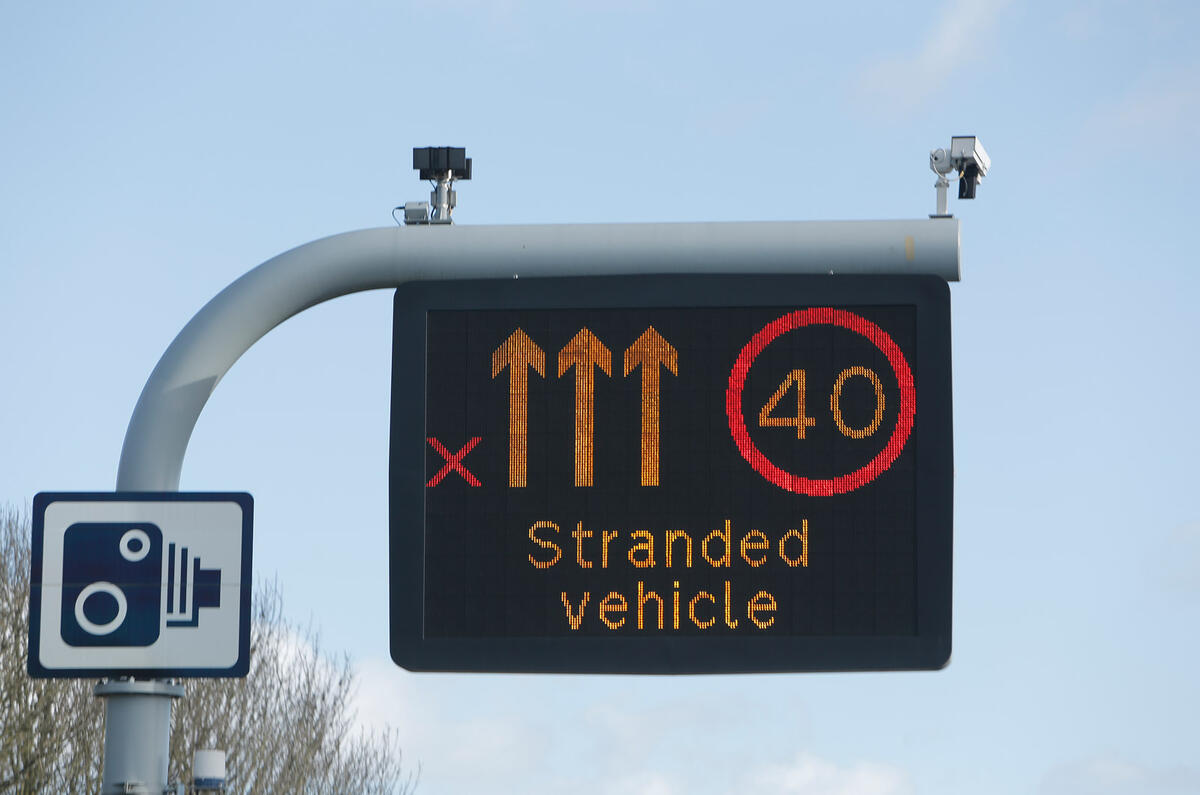
We pull up at an angle, around 100 metres from the 911, a Carrera 4 S. Mike and Tony jump out and help themselves to armfuls of cones and a large warning sign from the Discovery’s boot. They stride back along the closed lane to set out the safety kit, before returning to quiz the Porsche driver. It turns out he ran out of petrol just a mile or so from Clackett Lane Services.
“The fuel range said 18 miles but then the engine stuttered and stopped,” he says.
Mike and Tony decide that although he’s called his rescue service, they’d rather he was off the road right now. Usually, TOs patrol with just one vehicle and travel in pairs, but today we’re being shadowed by a second vehicle, a Mitsubishi Shogun (noisier, less powerful and not half as comfortable as our 208,000-mile Discovery). Tony decides the Shogun can tow the Porsche to the services. With the 911 hitched and a potential traffic accident averted, they gather up their safety kit, jump back in the Disco and follow it to Clackett Lane.
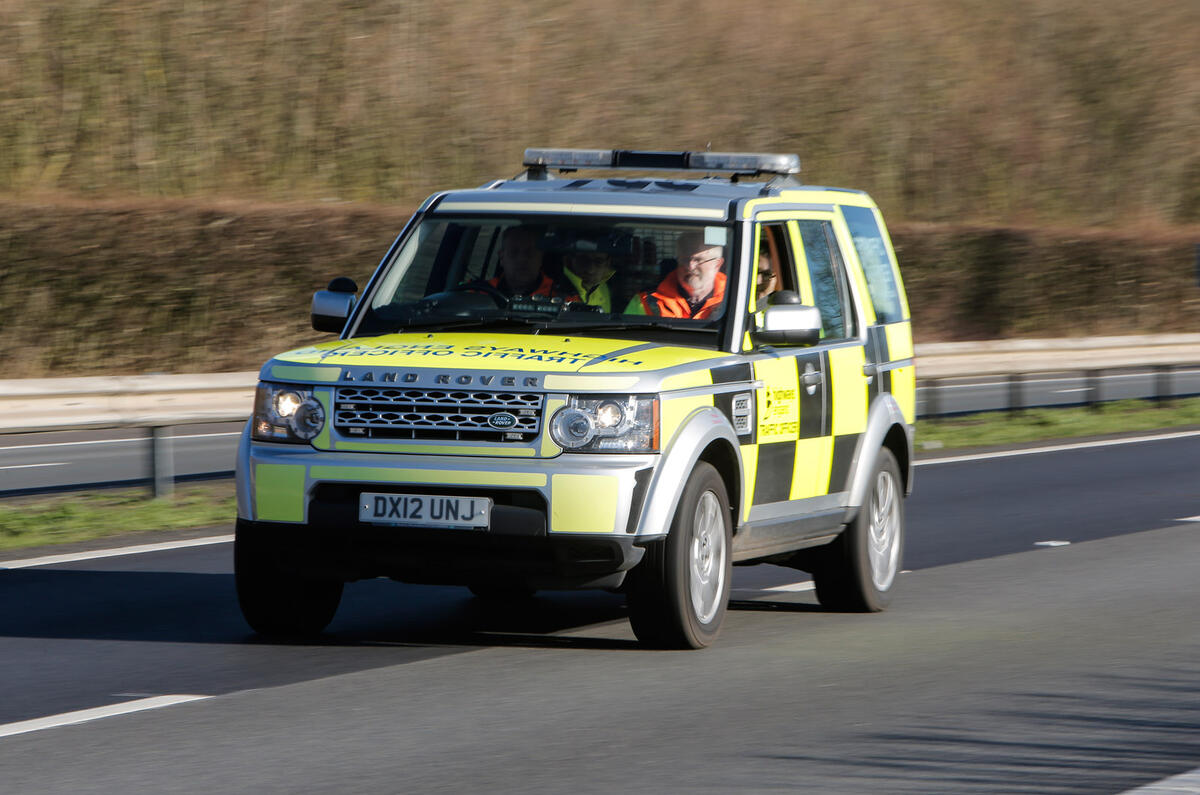
TOs can take care of routine traffic accidents, but those involving injury must be handed over to the police. In such circumstances, and if required, the TOs will get on with setting out cones and directing traffic.
As I watch the relieved Porsche owner filling his car with petrol, now clear of the road and no longer a hazard either to himself or other drivers, it’s hard to think of the TOs as anything but the good guys. Given the choice between a portion of Porsche in my path or a motorway Womble with facial hair, a Napoleon complex and a taste for meat pies, I’ll take the latter.
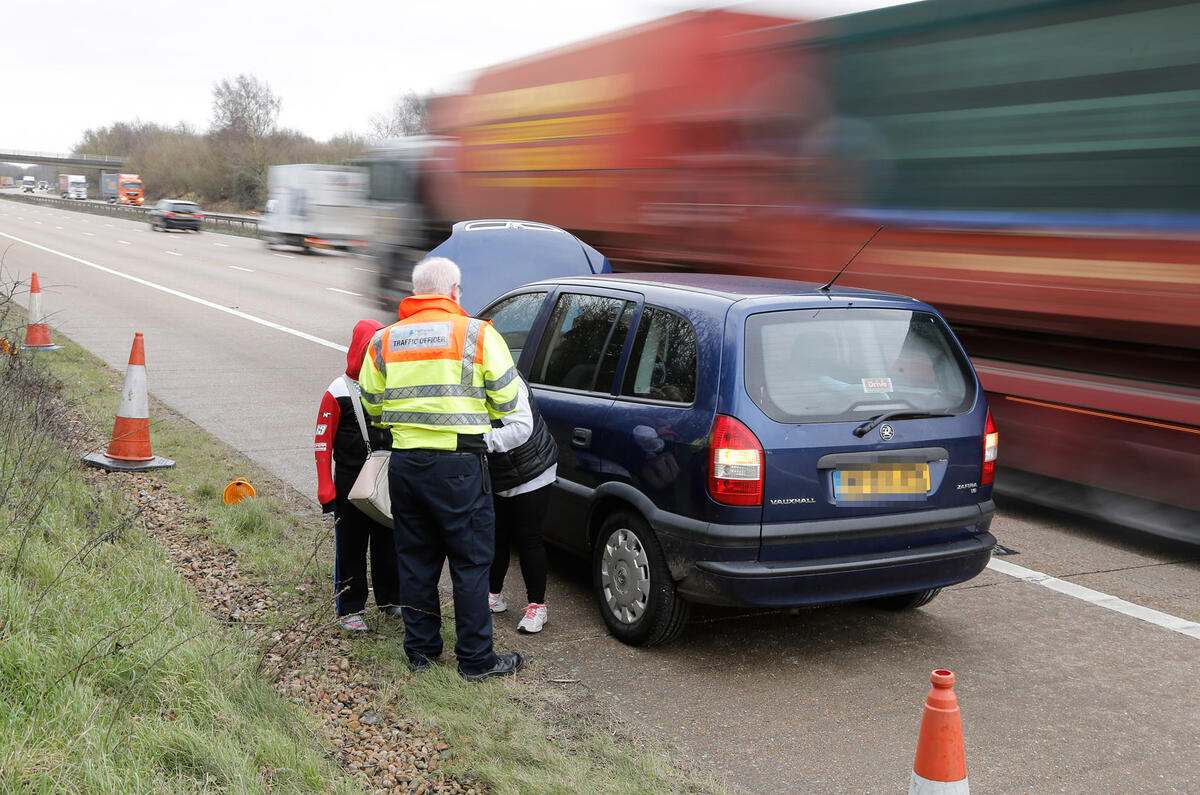
Who are they?
The Highways England Traffic Officer Service is a division of Highways England, formed in April 2015 and previously known as the Highways Agency. The Traffic Officer Service itself was established in 2004.
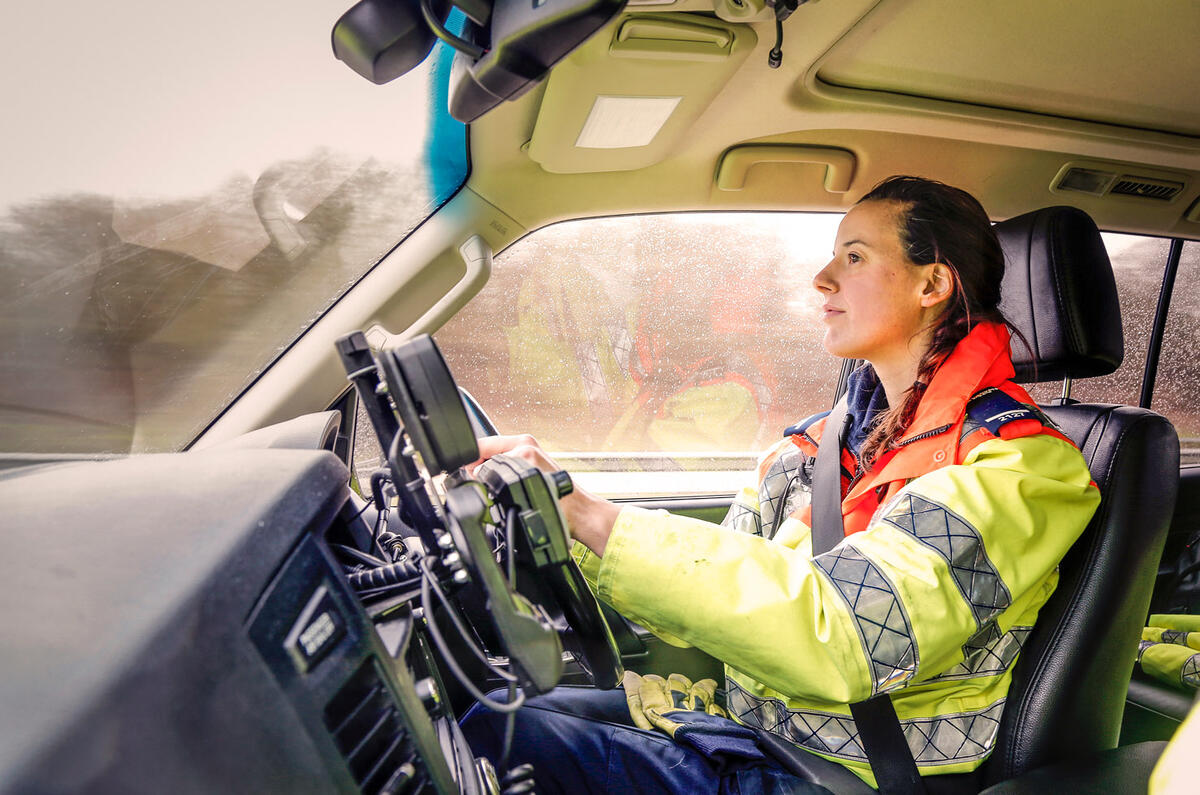
The facts
Highways England is responsible for 4300 miles of major A-roads and motorways.
There are 1500 traffic officers and seven regional control centres.
The service has 200 vehicles, mainly Land Rover Discoverys and Mitsubishi Shoguns.
TOs attended more than 2.3 million incidents from 2004 to 2014.
TOs attended 215,568 of the 595,986 reported incidents on the strategic road network in England in 2015.
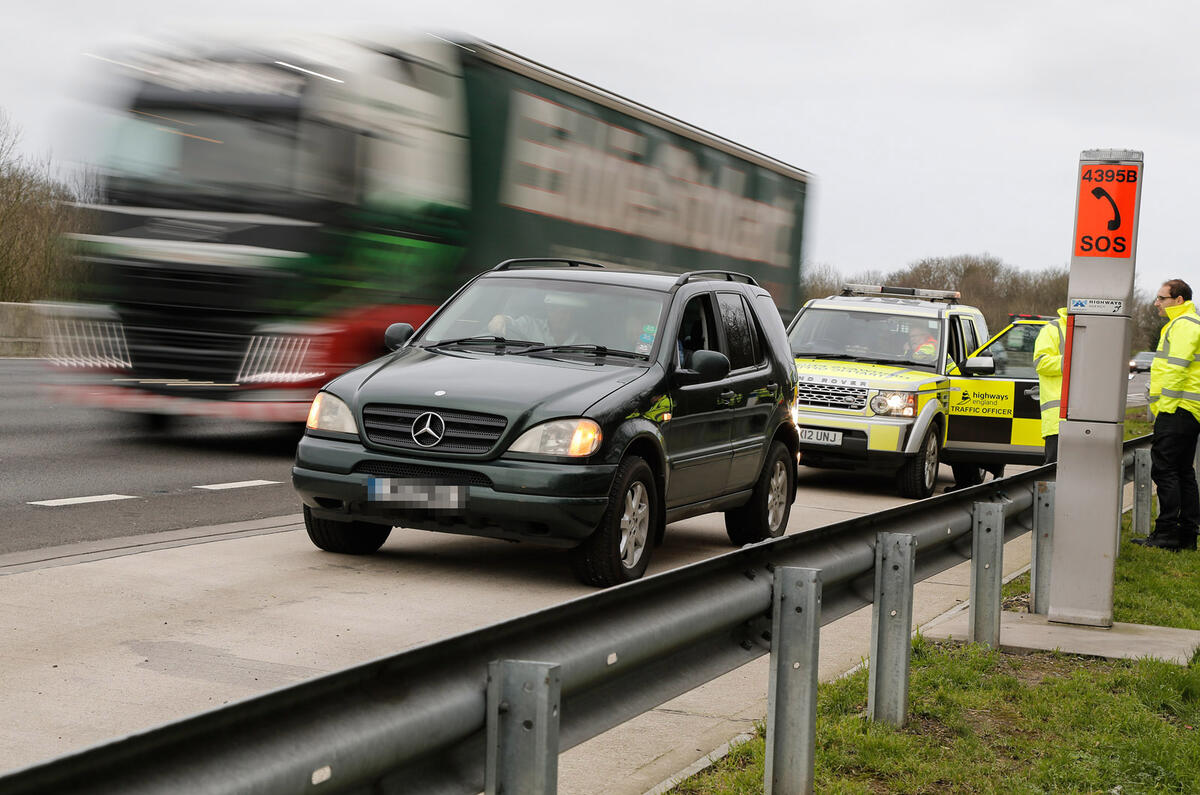
My day with the traffic officers
BREAKDOWN (M25) Mercedes ML430 stranded in refuge on M25. Rescue service already summoned. Traffic Officer phones from refuge’s emergency phone to establish precise location. Nothing more to be done.
BREAKDOWN (A2) Head to a broken-down truck but intercepted by another TO team, who take over.
BREAKDOWN (A2) Reports of a broken-down car. Red ‘X’ and 40mph variable speed limits showing, but on arrival, car has gone. (On about three occasions, the arrival of the TOs is sufficient to prompt drivers to start their cars and leave the hard shoulder pronto.)
BROKEN EMERGENCY SERVICES GATE (A2) TOs try — and fail — to leave the A2 via an emergency exit. The barrier lock is seized. They report it for repair.
TACHO BREAK (M2) TOs spot truck driver parked on hard shoulder taking an illegal tachometer break. Tony says. “Truckers plan their journeys either side of the Channel so they can rest near Dover where it’s safer. But it’s illegal to do so on the motorway. The police fine them £35.”
BREAKDOWN (M25) Vauxhall Zafira carrying a family of three, including a child on the way to hospital to have a tooth out, stranded on the hard shoulder. Rescue service already called.
BREAKDOWN (M20) Ford Transit with a puncture. TO helps driver release the wheel and he’s quickly away.
DEBRIS (M26) TOs clear abandoned bonnet in central reservation.
BREAKDOWN (M25) TOs attend a Porsche 911 that has run out of fuel and is stranded where there is no hard shoulder. They tow the car about a mile to services.
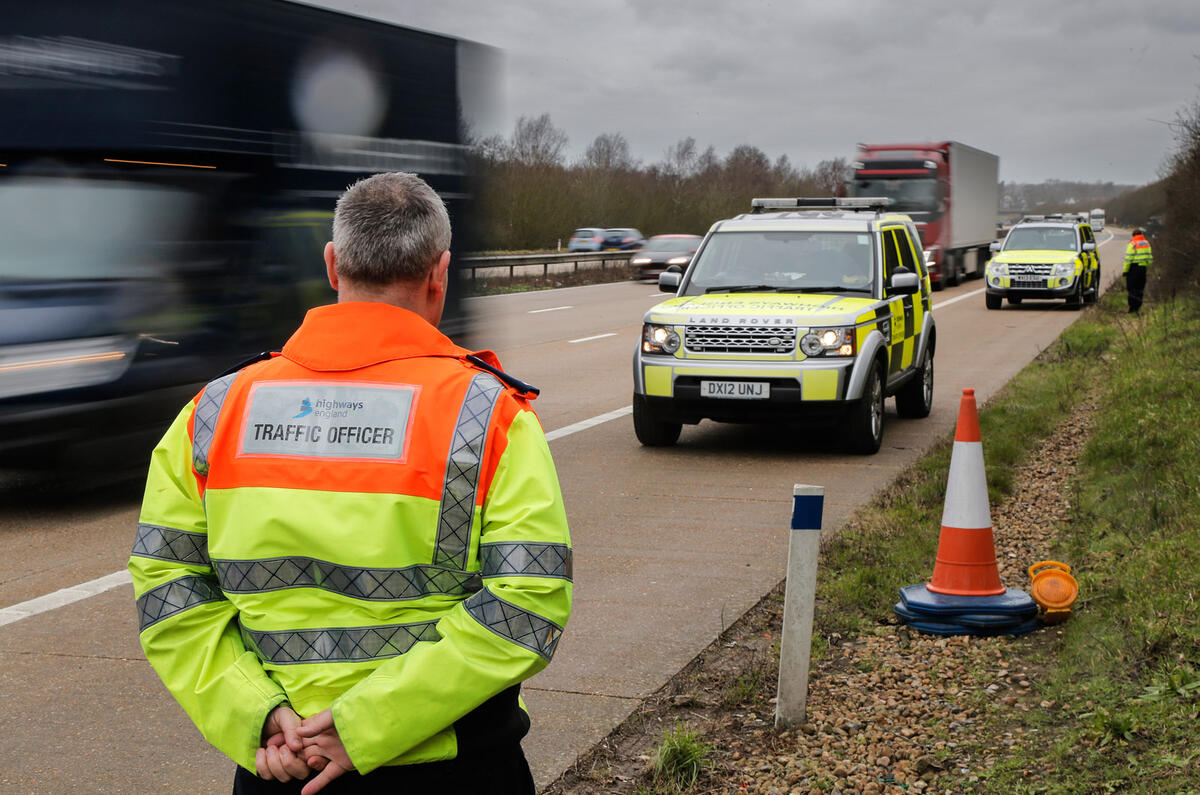
The cars
Traffic officers mostly drive off-roaders with large towing capacities, and typically automatic diesel Land Rover Discoverys and Mitsubishi Shoguns. Each vehicle carries a team of two TOs plus 625kg of equipment comprising traffic cones, collapsible safety barriers, tools, brooms, lights, foil ponchos and a loose material called Sphag Sorb for absorbing oil spills. They also carry a so-called ‘load cell’ — essentially, an ultra-strong tow rope they can use to attach an HGV and haul it clear of the carriageway. The vehicles have two batteries and the engine is rarely switched off while on duty. TOs can lock the car and leave its engine running while attending an incident.
John Evans

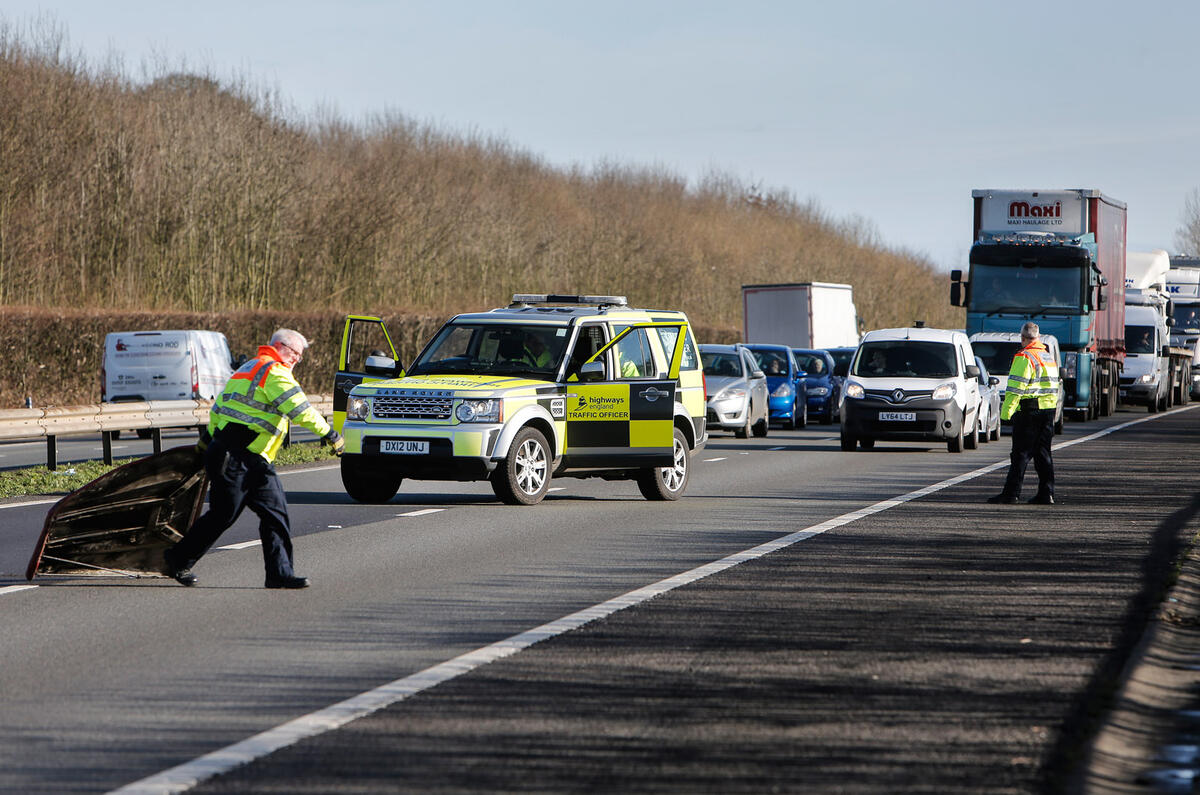
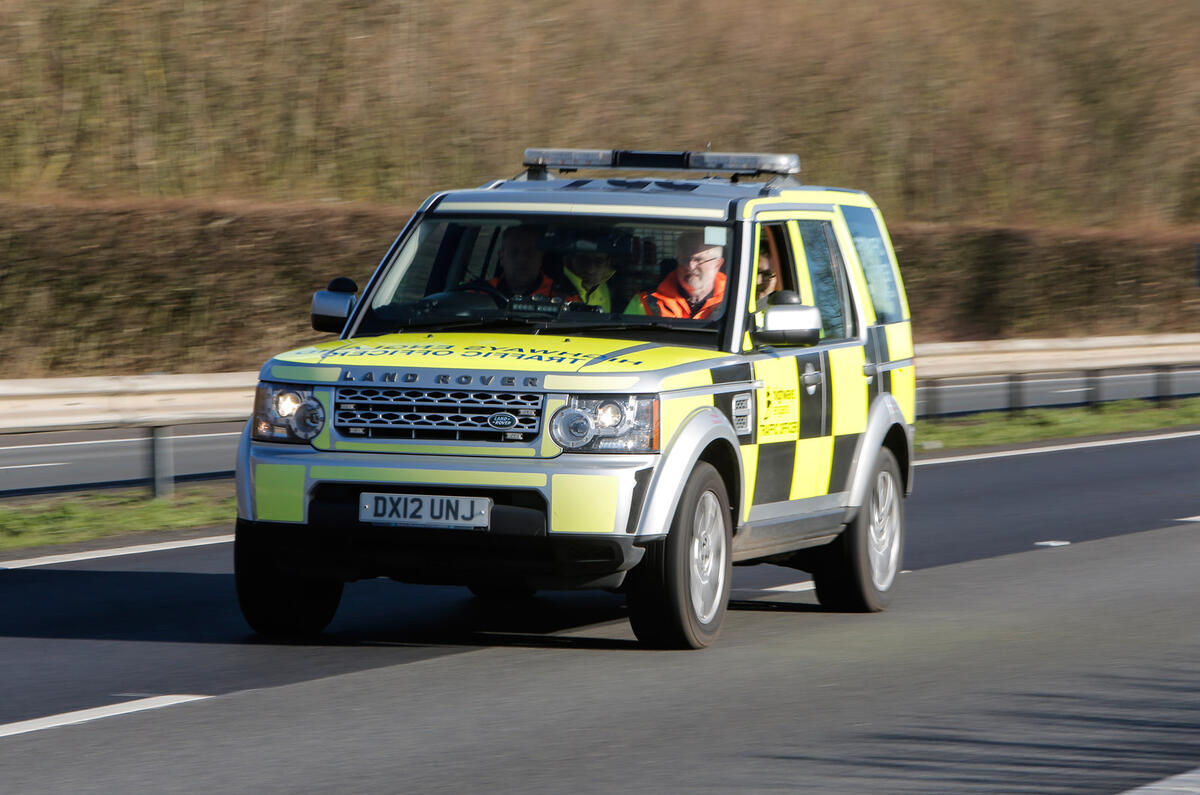
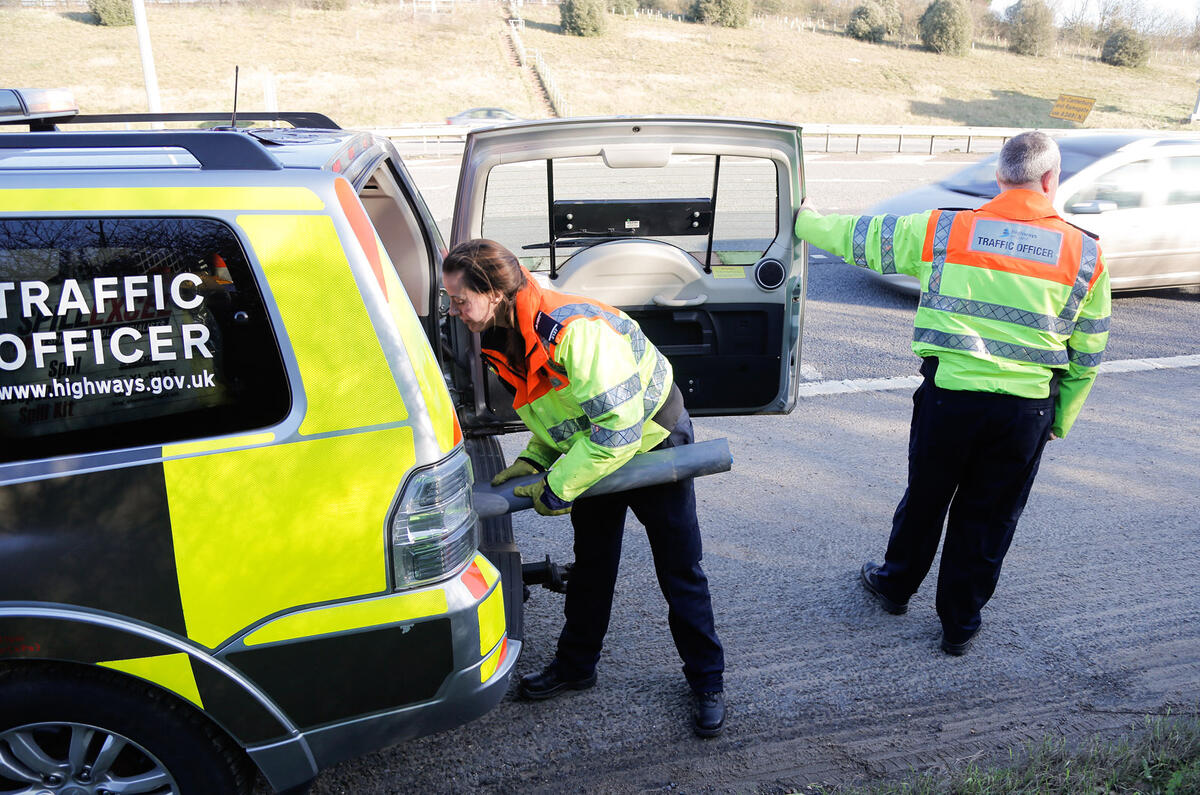
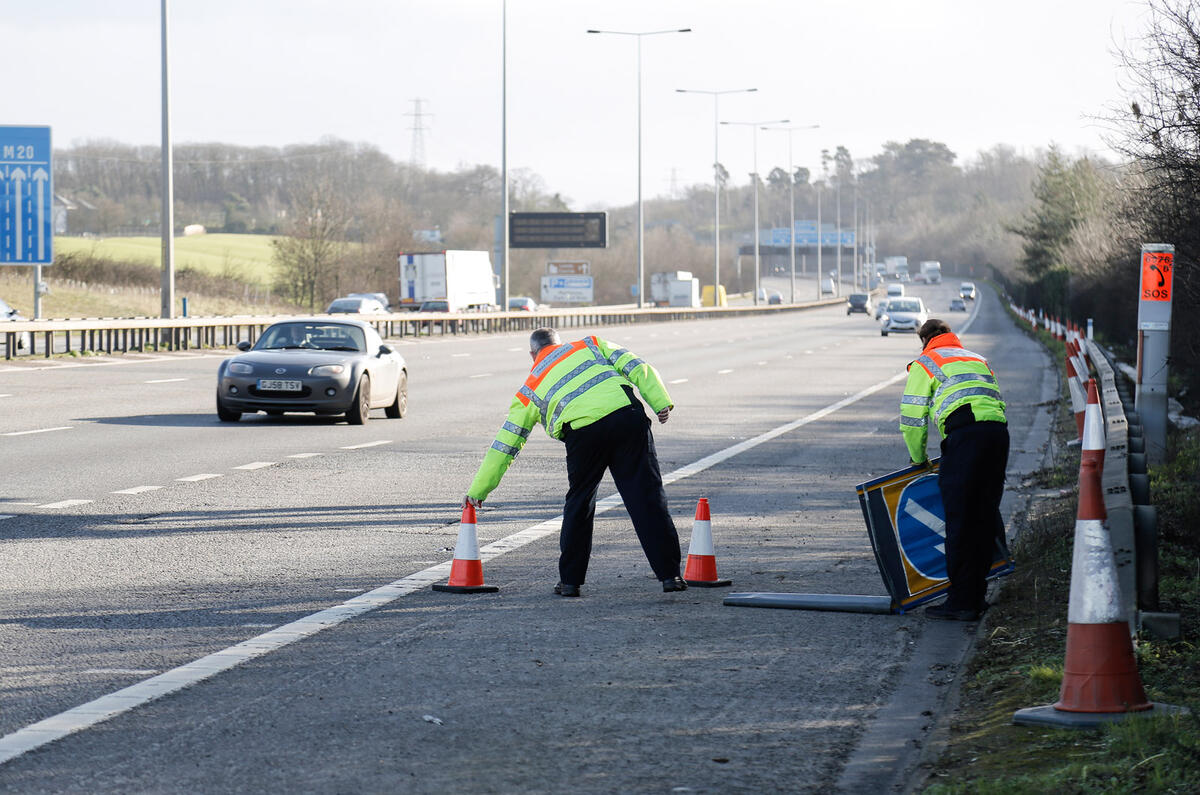
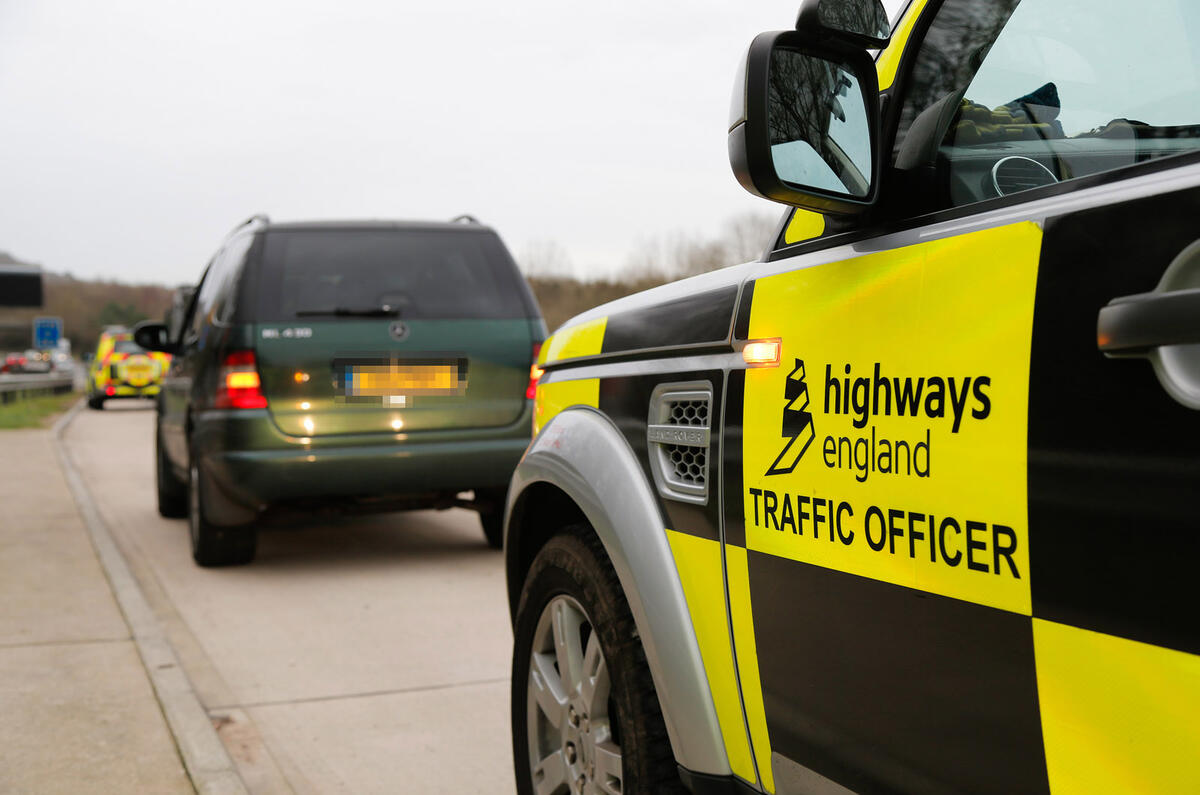
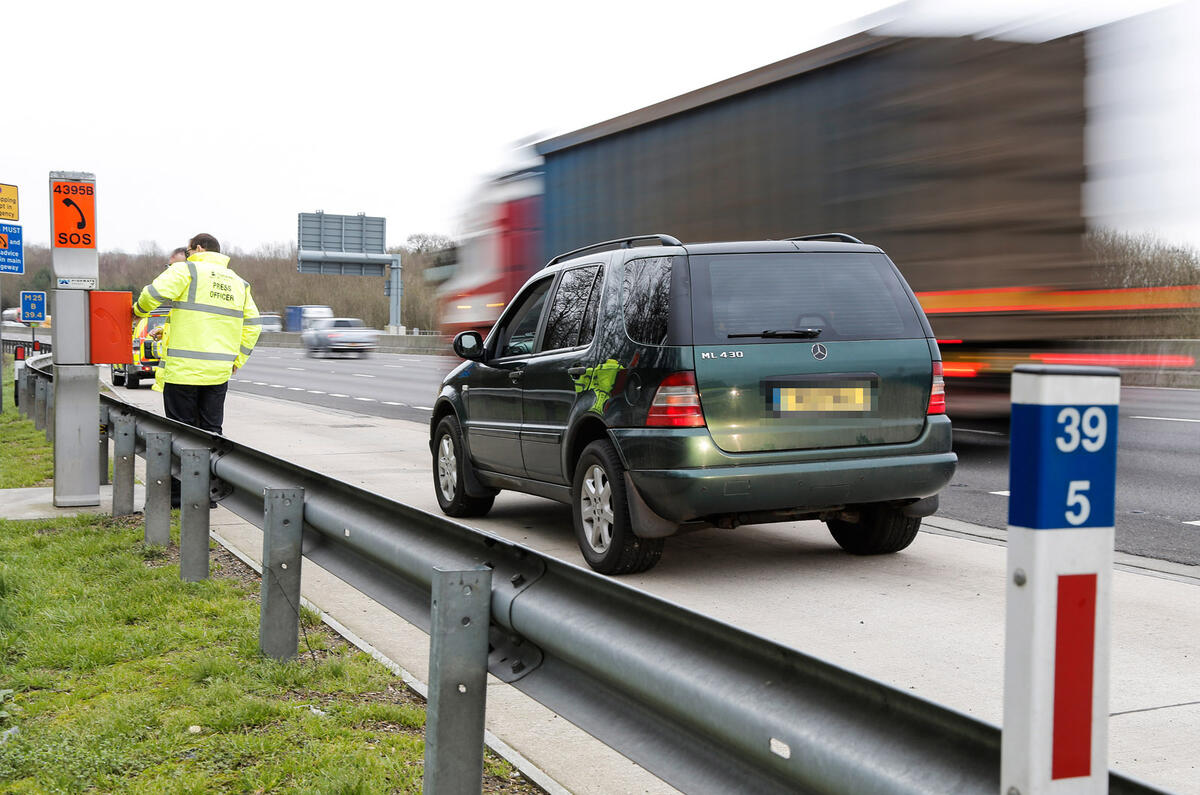
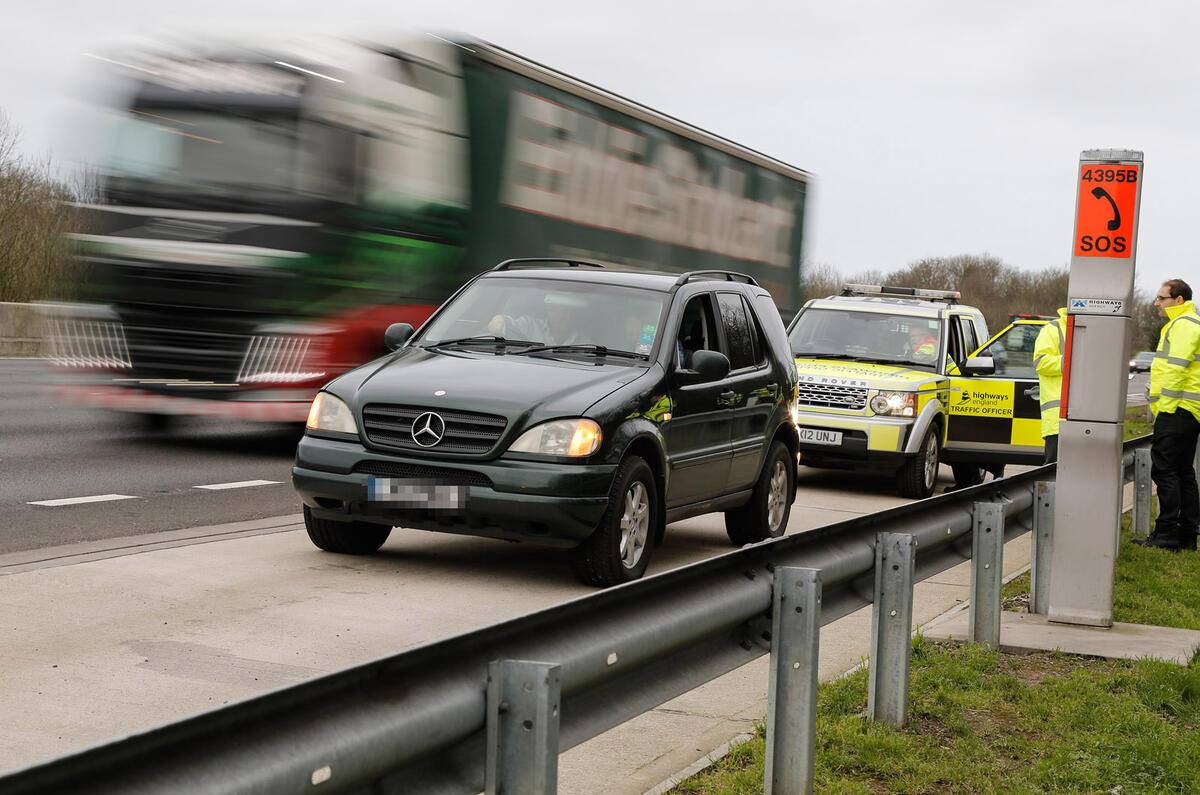

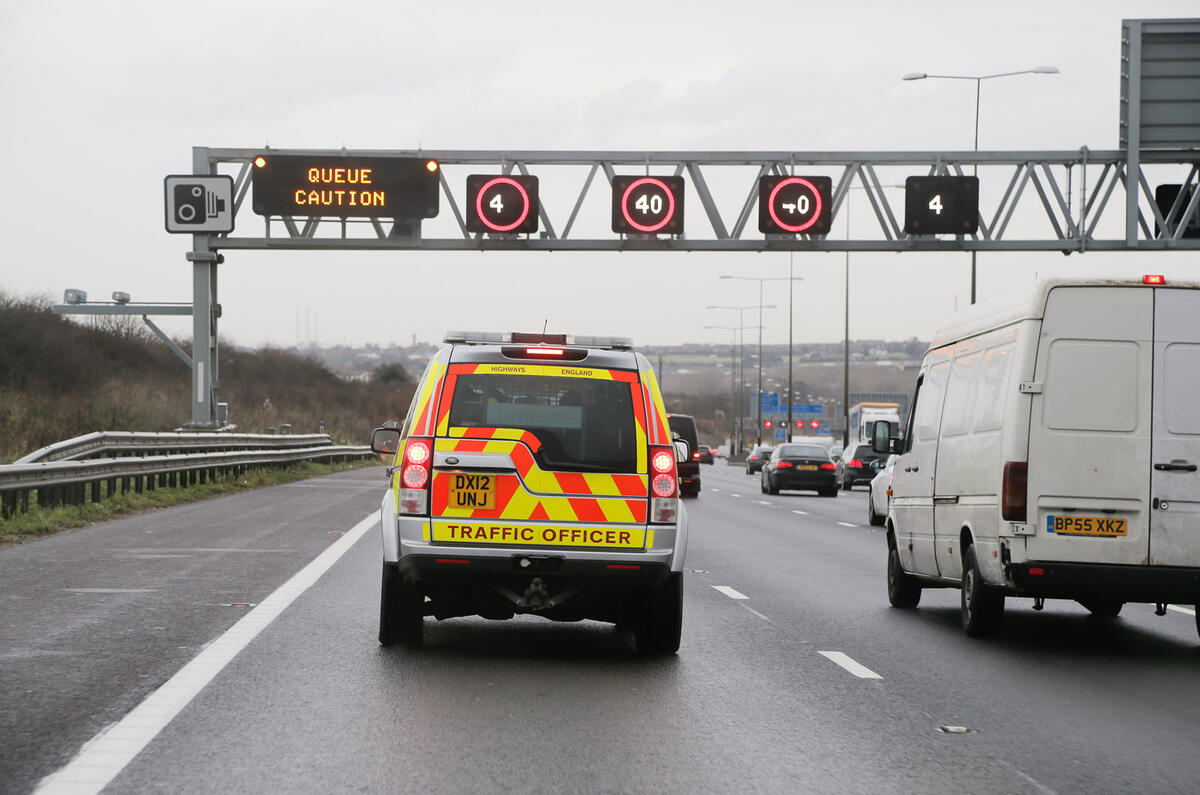
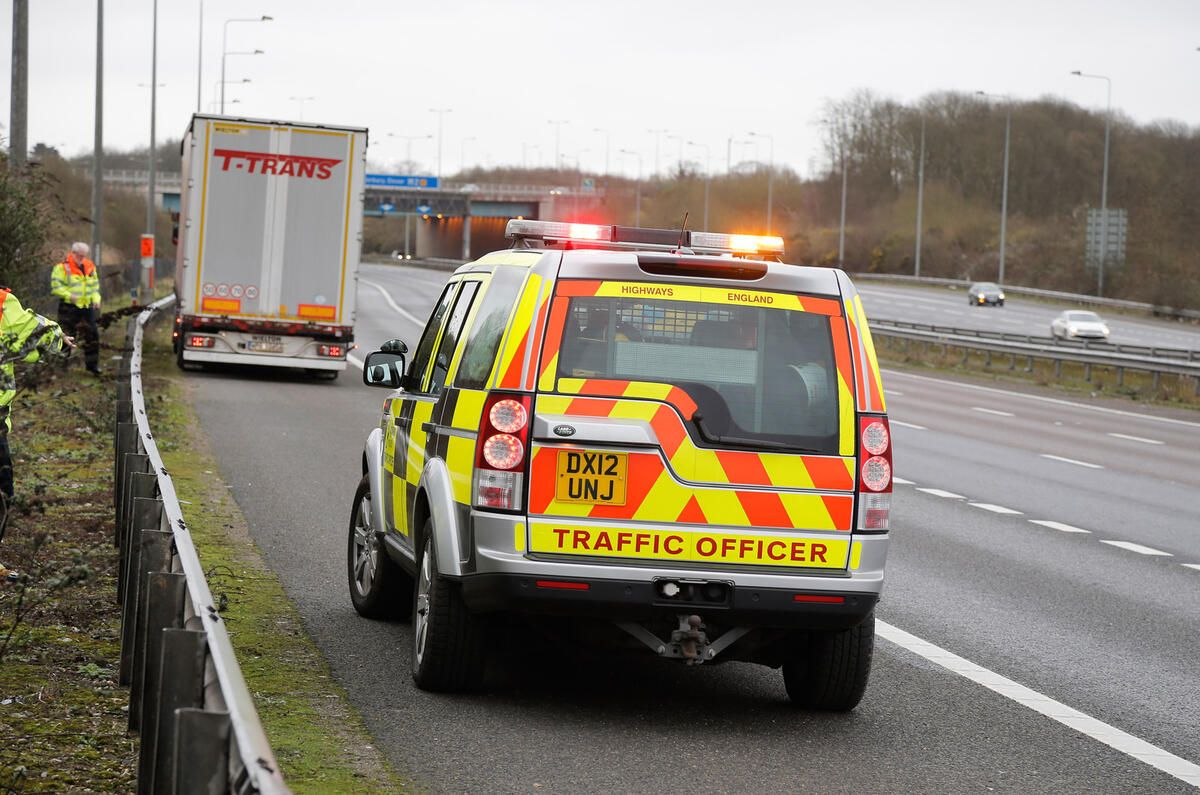
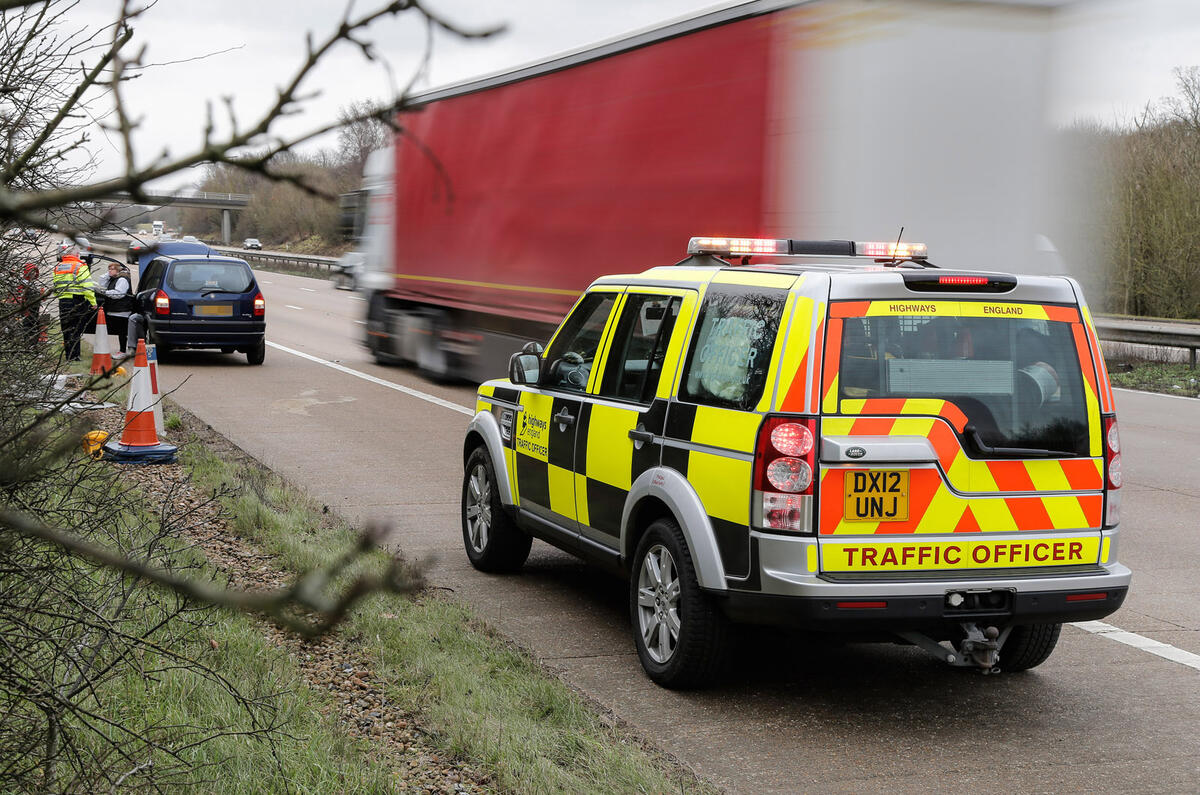
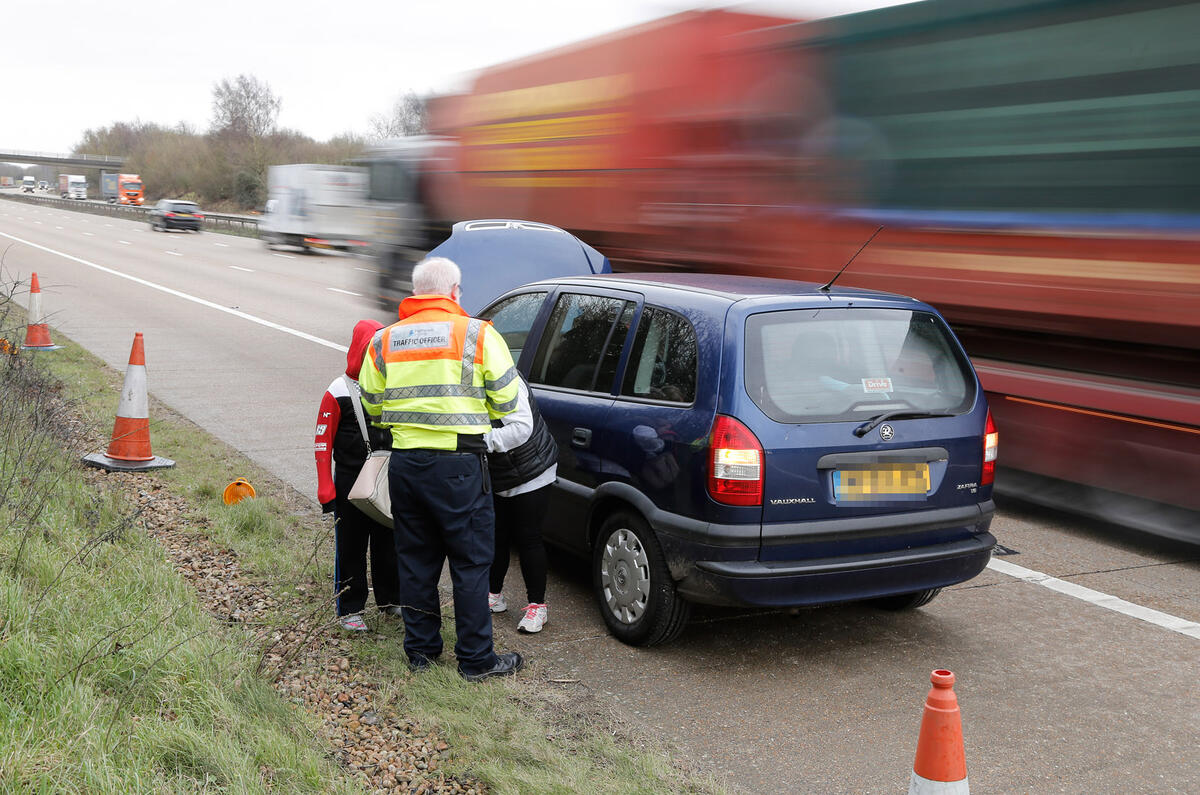
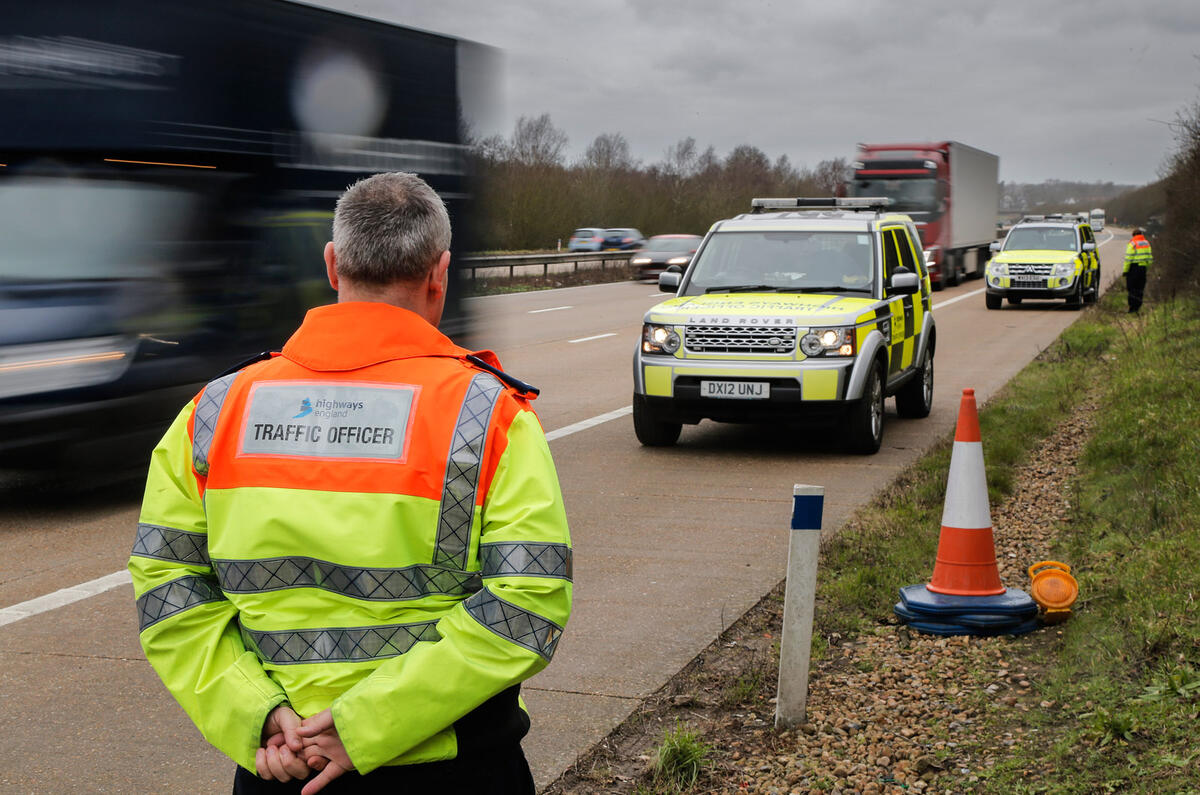

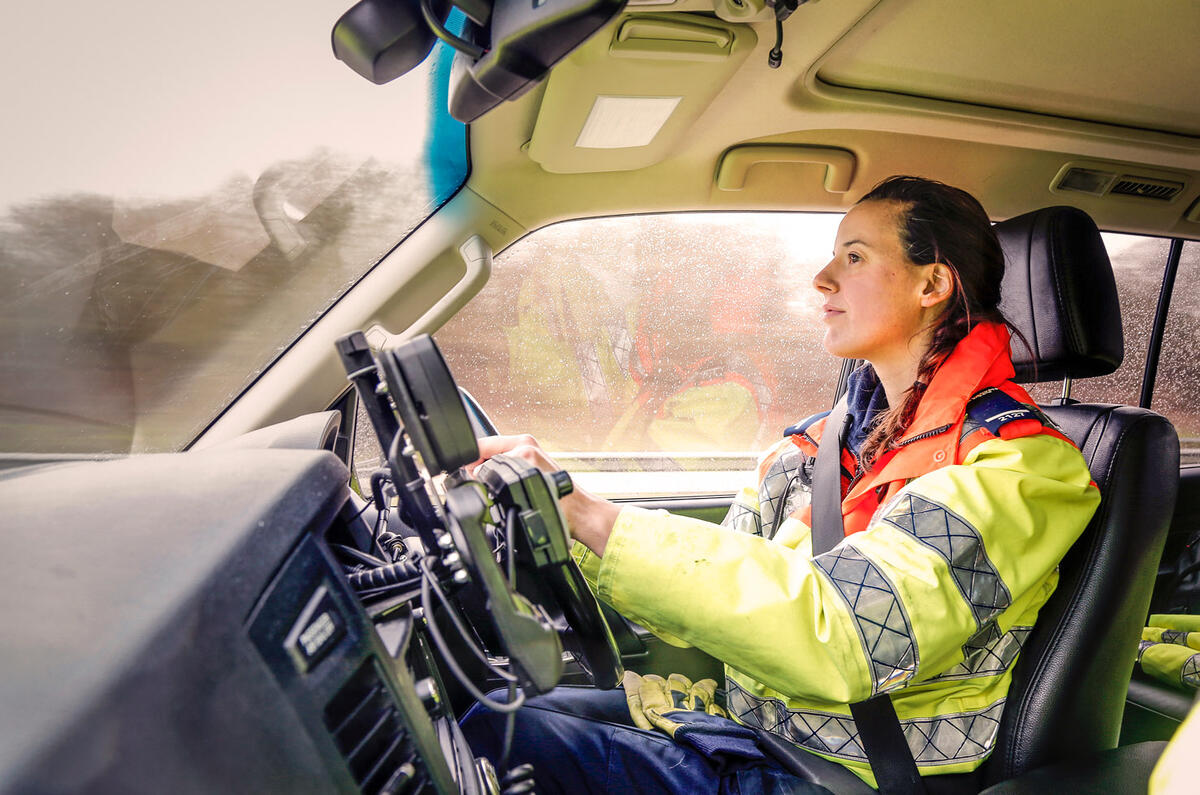
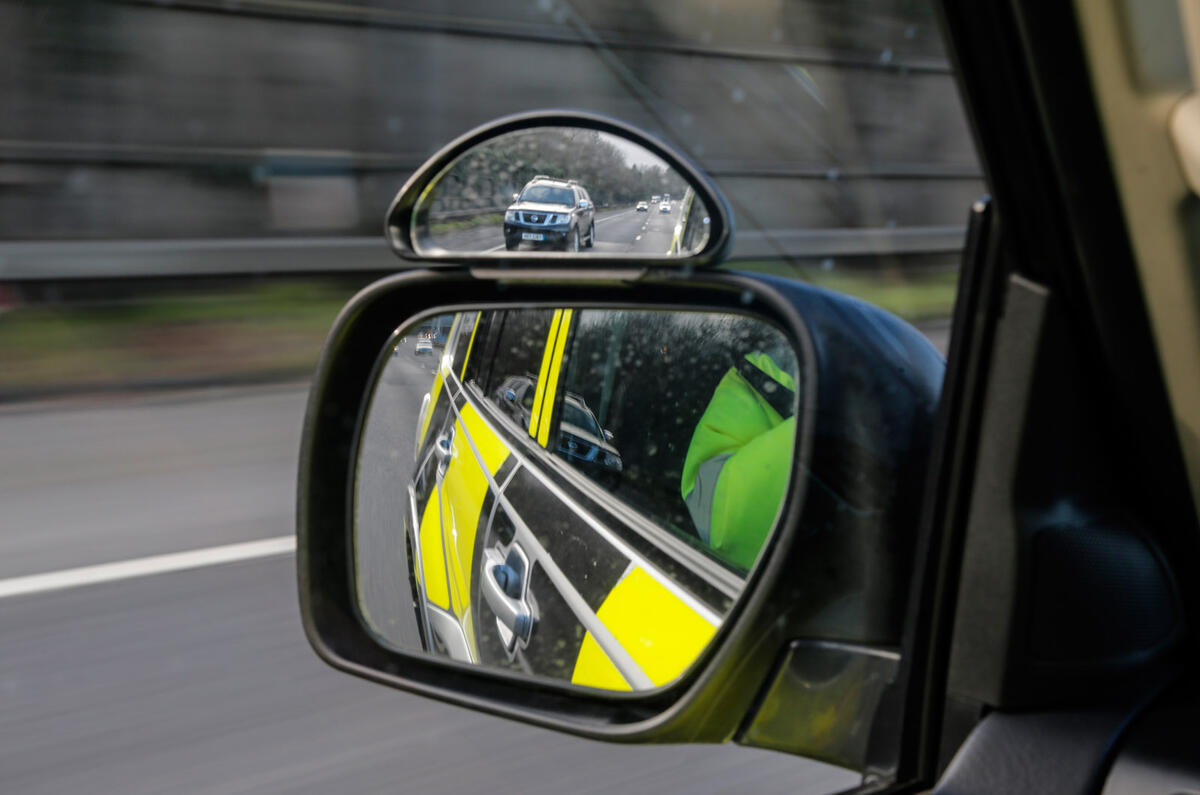
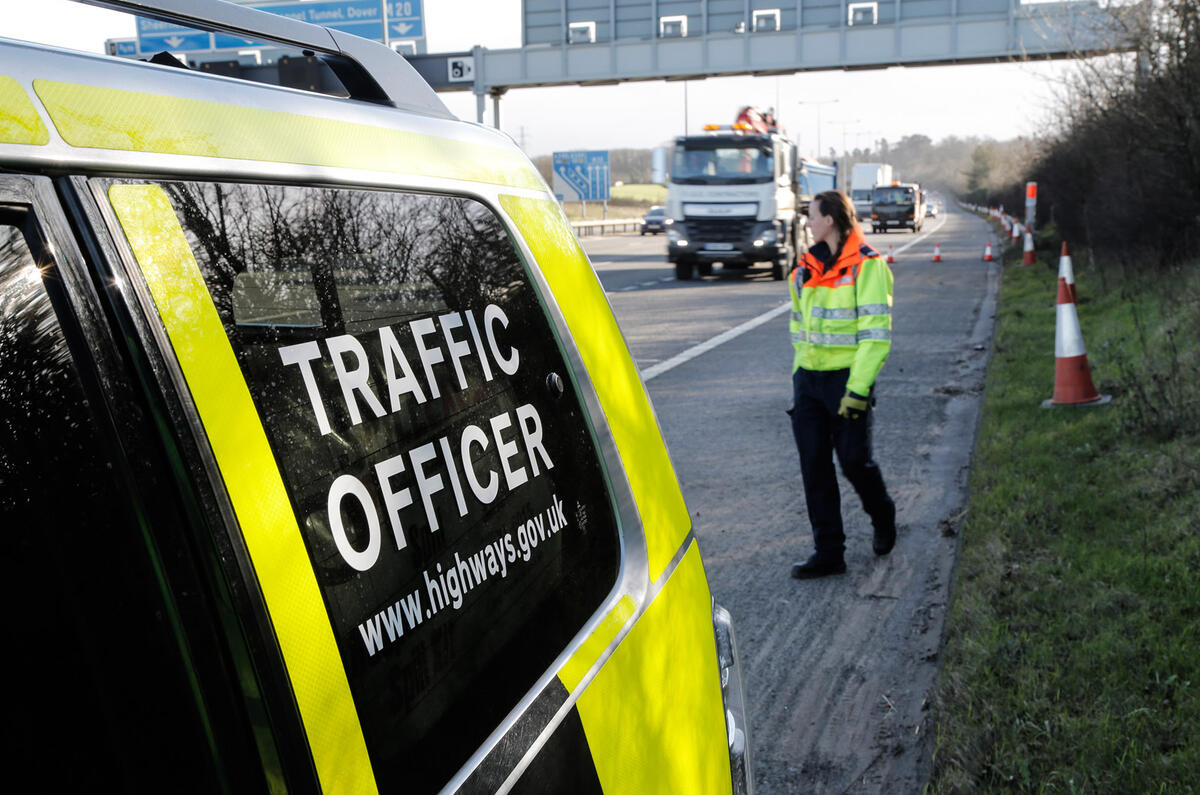
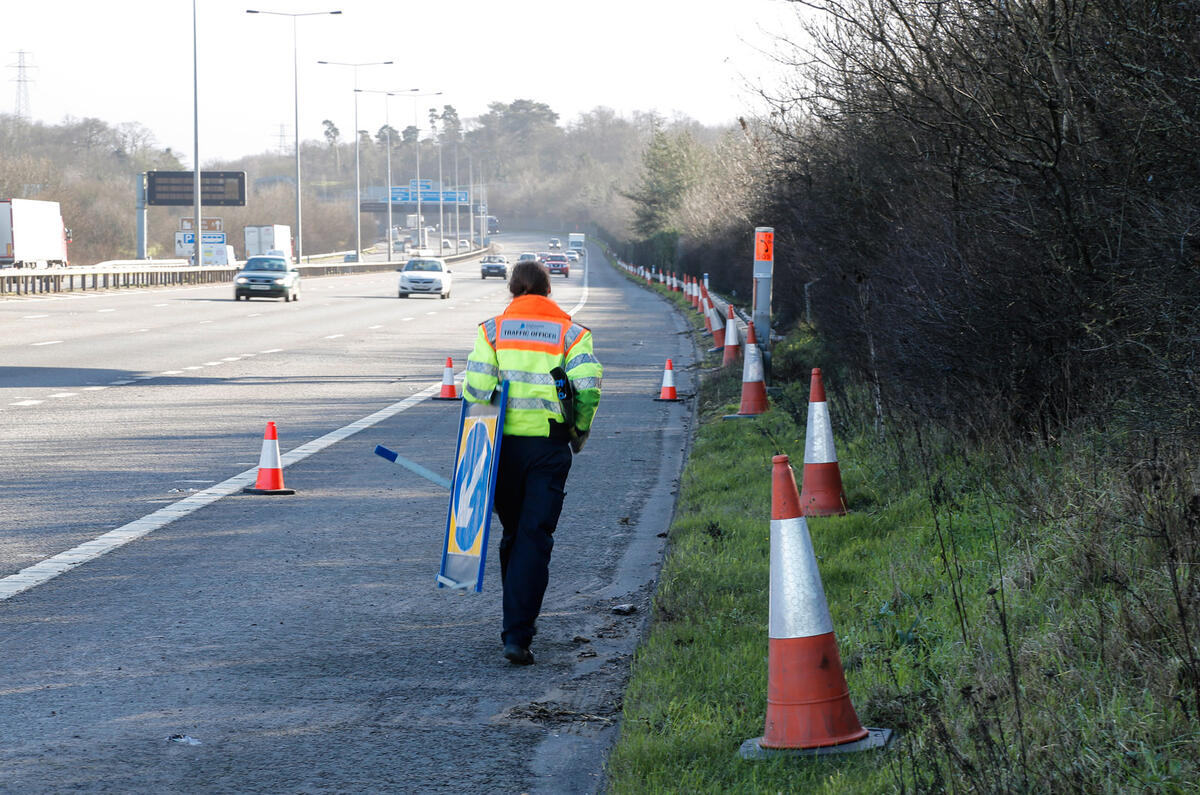
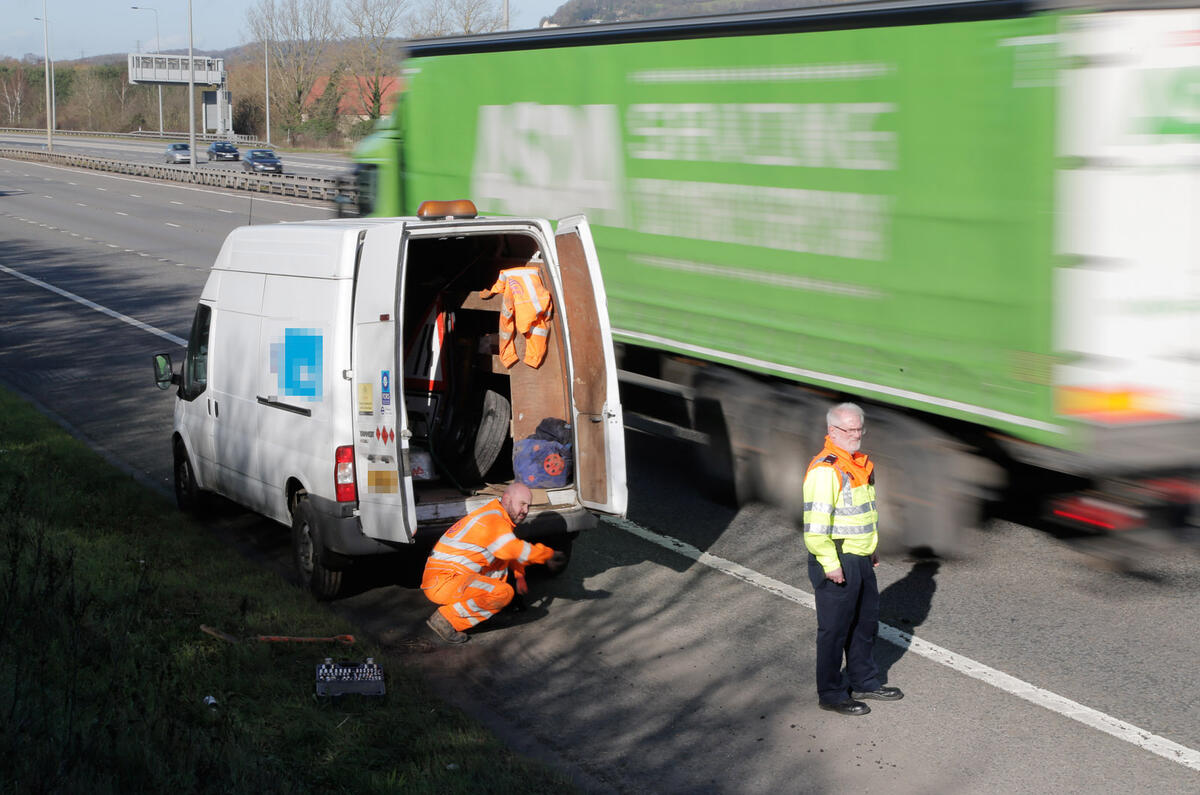
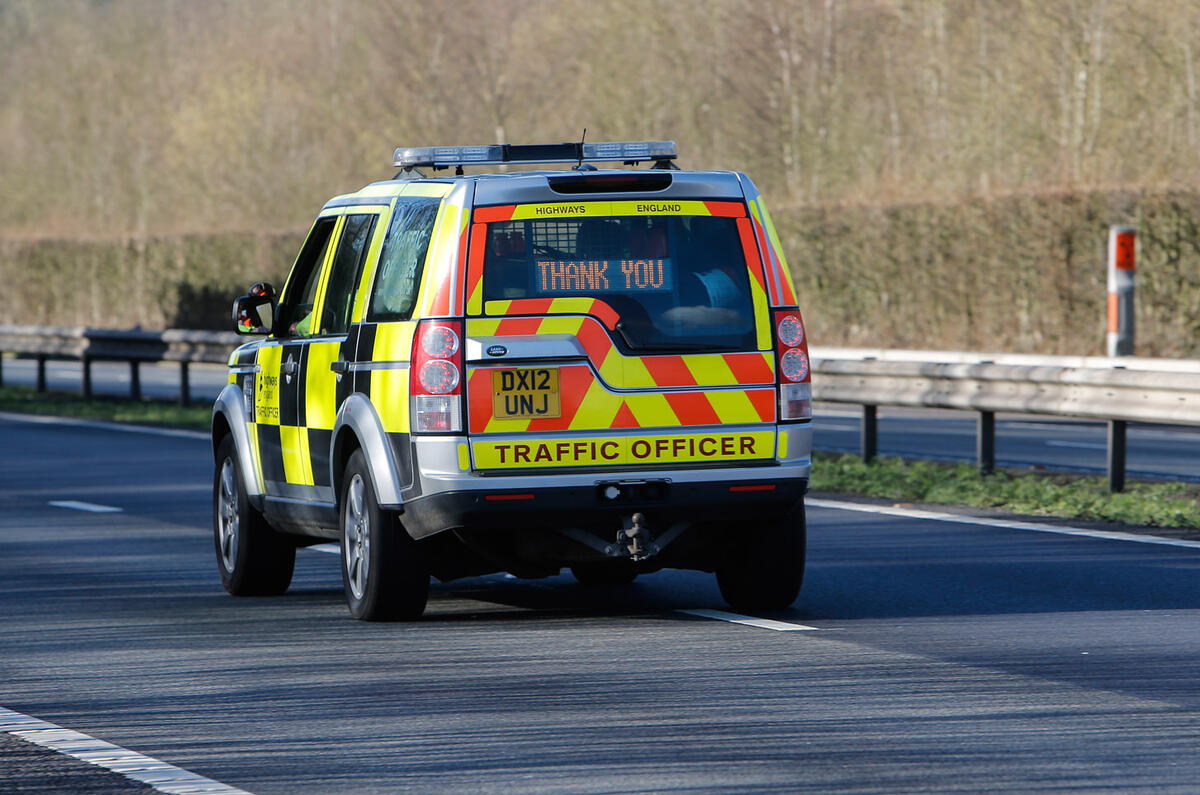
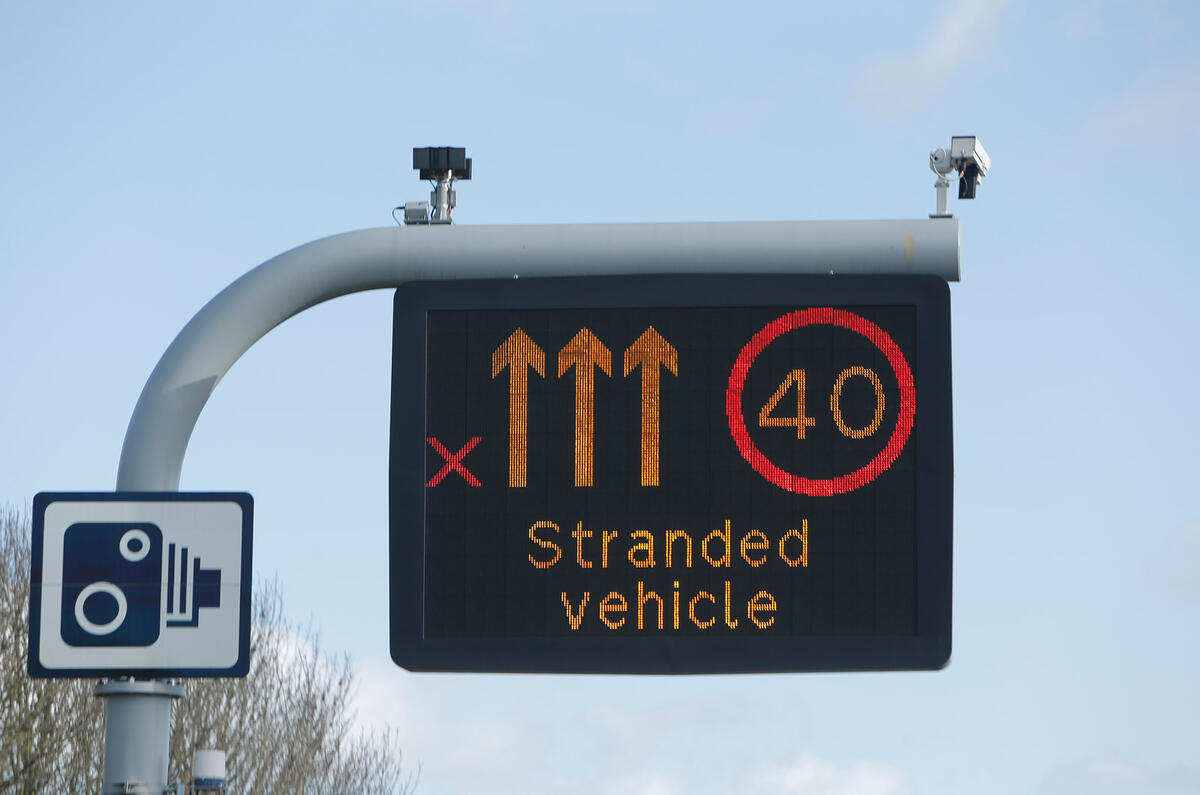
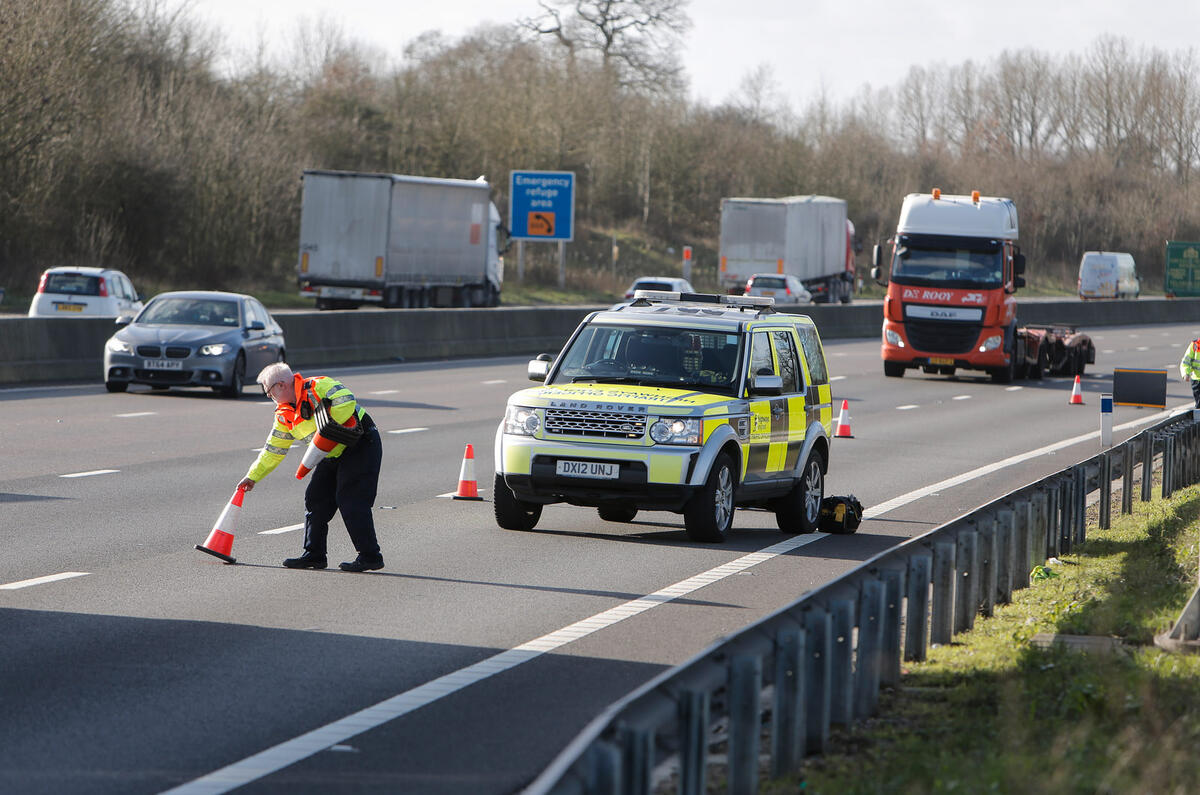
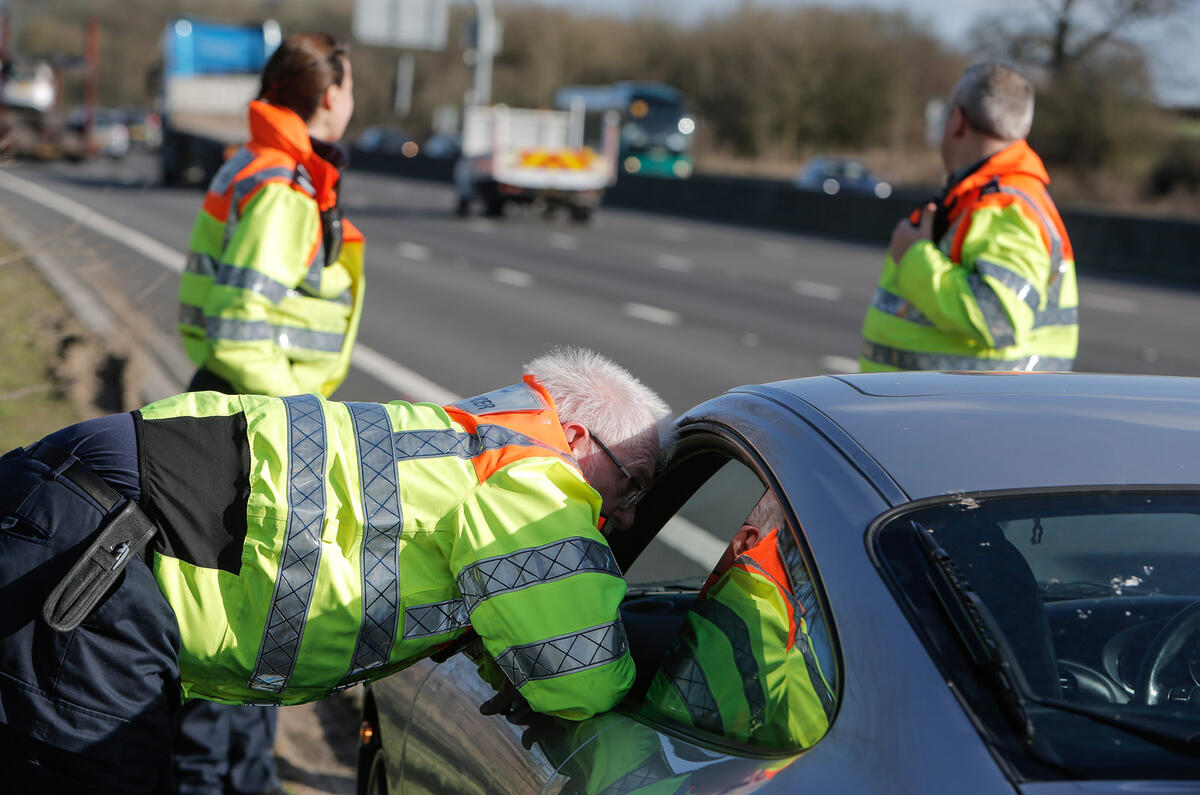
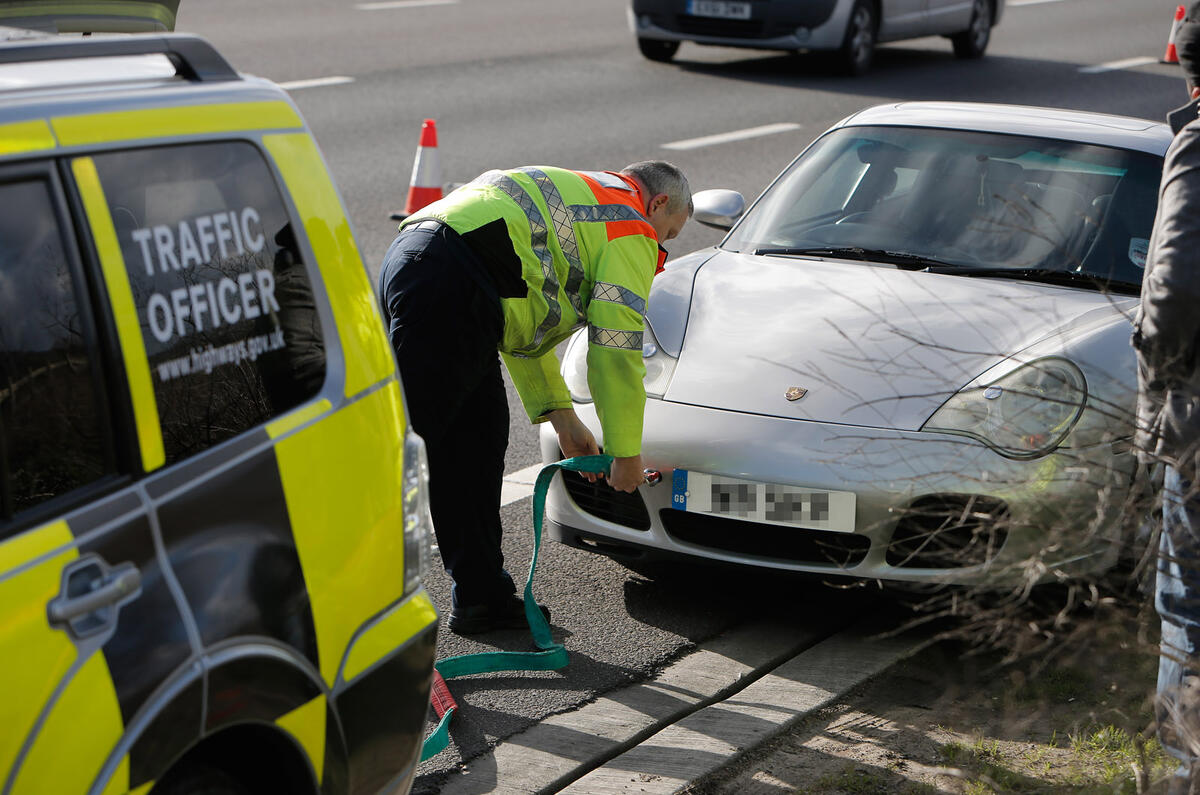

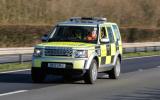
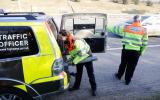
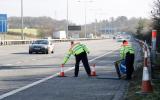


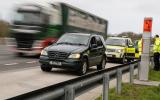
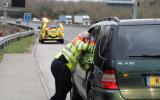
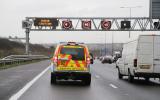
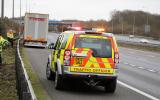
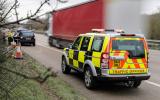
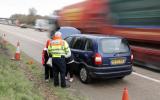
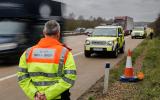
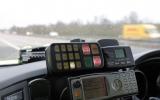
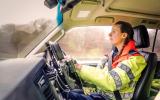
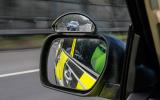
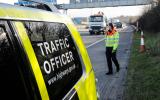
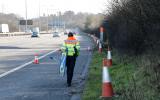
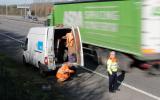
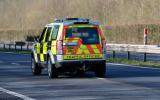
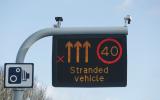

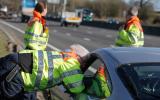
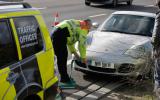


Join the debate
Add your comment
Re: 289
There's a reason you haven't seen us tow anyone (or perhaps do anything at all). In a typical shift, I might directly interact with the drivers and passengers of less than 10 vehicles - 10 or so out of literally millions that drive through the area I work in. The work we do is only seen or experienced by a tiny minority of our customers (yes, we use the word customers..), while the remaining millions only see us parked or "standing around". It's one of the biggest frustrations of the job.
There's also a good chance that some of the cars you've seen on the hard shoulder are there because we've put them there, i.e. towed/pushed them clear of the road, where they had broken down or crashed. The hard shoulder is considered a (relatively) safe place, so we generally don't tow vehicles off the hard shoulder.
As for the cars, I imagined me if you thought about it a little, you'd probably find the answer to why we have what we have. The Discos and Shoguns have excellent road presence, are all weather and off road capable, can carry the heavy load that we carry, can tow our trailers, are comfortable to be in for 8 or so hours, are safe for the occupants, and perhaps most importantly, with the the use of the mentioned load cell (which is a little more than just a strong rope, incidentally) can easily clear more or less anything that is blocking the road you wish to drive on - including LGVs, buses and coaches etc.
Besides which, we have tried other vehicles, that all fell short in some respect, including vans, pick ups and estate cars. In the near future we are trialling Outlander PHEVs, and there will no doubt be other vehicle types in future too.
@ coney McConeface
I spend half my life on the motorway, and have NEVER seen one of your vehicles used for anything useful.
I have seen cars stuck in the middle lane of a stationary motorway which I could have quickly towed to the hard shoulder, but the Highway vehicle is parked on the hard shoulder doing nothing with the occupants standing watching with their hands in their pockets!
The hard shoulder is a very UNSAFE place to be, and if you were to serve a useful purpose i would have thought it sensible to tow a broken down car to the next services or refuge if a recovery vehicle isn't available immediately. I have also witnessed your officers standing watching a lone female changing her own wheel, having (of course) blocked off lanes and causing chaos.
Carrying rubber cones around could be achieved in almost any Estate/Van....all would have 'road presence' when covered in your shiny graphics.
You don't need a vehicle capable of going off road on the motorway, and if the weather gets a bit snowy (rarely in this country), you are still going nowhere because the motorway will be logjammed.
Modern vans are perfectly comfortable for 8 hours or more....just speak to any delivery driver, and can carry a larger load than a 4x4.
Its poor use of the tax payers hard earned...end of.
Vans, really?
The police often ask for our help with carriageway clearance precisely because their estate cars aren't as good at it. As said in the article above, we clear debris, facilitate recovery, and clear live lanes. Just because you haven't seen us do it doesn't mean we don't risk our lives every day to ensure you don't get stuck in traffic.
HTO's
I have never seen them tow a vehicle from the hard shoulder ...ever. Mostly they just cause chaos by shutting down lanes and sprinkling cones liberally, whilst standing on the hard shoulder with their hands firmly in their pockets.
They don't even help a lone female change a wheel on their car!
And why the hell they need expensive to buy and run 4x4's when rural police cant get budget for a MUCH NEEDED 4x4....any cheap estate car or even a Van would do the job!!
I actually looked into this
I'd be interested for Autocar to visit one of the control centres who look after the overhead gantries. I have a suspicion the new smart motorways with speed cameras are being used for revenue earning. Fake gantry warnings, or warnings that are left in place for hours after any incident has passed, seems to be the order of the day.